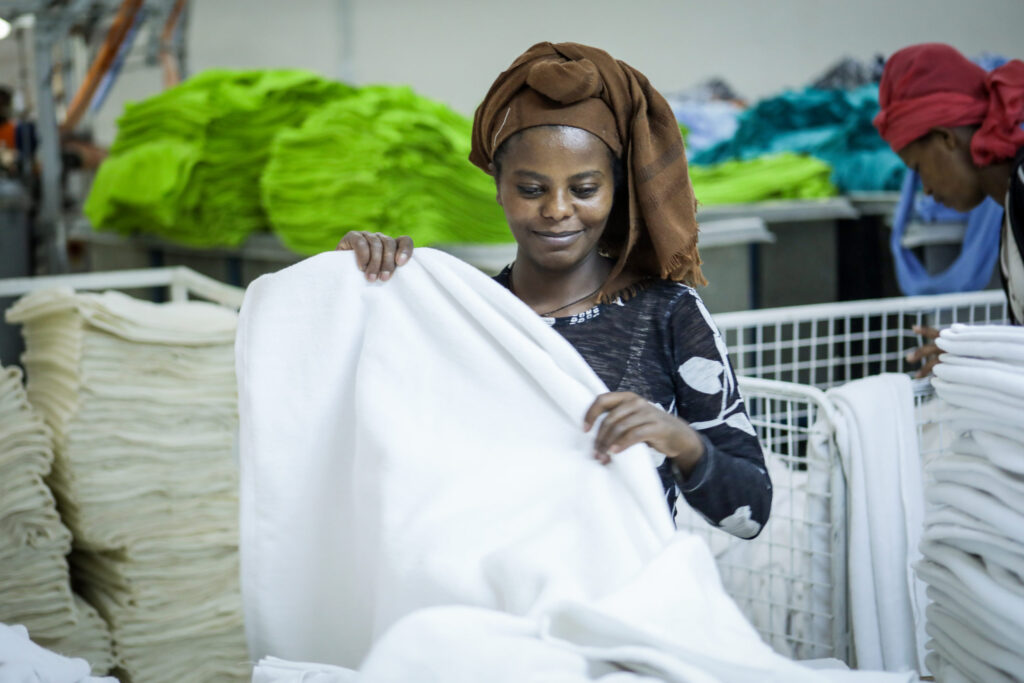In the dynamic and fast-paced world of fashion, success hinges not only on creativity and vision but also on the seamless execution of ideas. At the heart of this execution lies the partnership between designers and manufacturers—a cornerstone relationship that shapes the industry’s future. These partnerships fuel innovation, sustainability, and efficiency, enabling the transformation of creative concepts into tangible products that resonate with consumers worldwide. This article explores the unparalleled importance of designer-manufacturer partnerships and how they drive the evolution of fashion.
The Symbiosis of Creativity and Execution
Fashion is an interplay of artistry and pragmatism. Designers conceptualize garments that inspire, while manufacturers bring these visions to life with precision and scalability. This relationship is symbiotic:
- For Designers: Manufacturers provide technical expertise, material resources, and production capabilities.
- For Manufacturers: Designers introduce innovative ideas, pushing boundaries and creating demand for cutting-edge processes.
When these two entities work in harmony, they unlock the full potential of creativity and craftsmanship.
Key Benefits of Strong Designer-Manufacturer Partnerships
a. Enhanced Innovation
Collaboration fosters an environment where new ideas flourish. Designers benefit from manufacturers’ insights into materials, technologies, and production techniques, enabling them to experiment with new fabrics, sustainable processes, and intricate designs.
Example: Luxury brands like Gucci partner with specialized manufacturers to develop unique textiles that set them apart in the market.
b. Increased Efficiency
Seamless communication and alignment reduce production delays, errors, and wastage. A strong partnership ensures that prototypes, samples, and final products meet quality standards without excessive back-and-forth.
c. Cost Optimization
Manufacturers with deep industry knowledge help designers make cost-effective choices without compromising quality. This is especially crucial for emerging designers operating with limited budgets.
d. Scalability
A trusted manufacturing partner can scale production as demand grows, ensuring that designers meet market needs without compromising quality or delivery timelines.
Building Blocks of a Successful Partnership
Establishing and maintaining strong relationships between designers and manufacturers requires intentionality and effort. The following are critical elements of a successful collaboration:
a. Shared Vision and Values
Alignment on goals, whether it’s innovation, sustainability, or luxury craftsmanship, creates a unified direction. Partnerships grounded in shared values tend to be more resilient and rewarding.
b. Clear Communication
Transparent dialogue minimizes misunderstandings and fosters trust. From design specifications to timelines, clarity is essential.
c. Adaptability
The fashion industry is ever-evolving. Successful partnerships adapt to changes in trends, consumer demands, and technological advancements.
d. Respect for Expertise
Designers must value the technical and logistical expertise of manufacturers, just as manufacturers should honor the creativity and vision of designers.
The Role of Technology in Strengthening Partnerships
a. Digital Design Tools
Technologies like 3D modeling and virtual sampling bridge the gap between designers and manufacturers by visualizing concepts before physical production begins.
b. Supply Chain Transparency
Blockchain and AI provide end-to-end visibility, ensuring ethical sourcing, sustainability, and traceability—a growing priority for conscious consumers.
c. Automation in Manufacturing
Automated processes, such as robotic sewing and laser cutting, enable manufacturers to execute complex designs with unparalleled precision, empowering designers to push creative boundaries.
Challenges in Designer-Manufacturer Relationships
Despite the benefits, these partnerships face unique challenges:
a. Misaligned Expectations
Designers may prioritize aesthetics, while manufacturers focus on feasibility and cost, leading to friction if not managed effectively.
b. Globalization Complexities
Working with international manufacturers involves navigating cultural differences, language barriers, and regulatory compliance.
c. Ethical and Sustainability Issues
Manufacturers operating in regions with lax labor laws or unsustainable practices can pose reputational risks to designers.
Solutions:
- Establishing clear agreements and quality standards.
- Vetting manufacturing partners thoroughly.
- Prioritizing transparency and accountability.
Case Studies of Iconic Partnerships
a. Nike and Flyknit Manufacturers
Nike’s collaboration with specialized manufacturers for its Flyknit technology revolutionized footwear, blending sustainability with performance.
b. Alexander McQueen and British Craftsmen
McQueen’s close relationships with local artisans resulted in collections that redefined avant-garde fashion while preserving traditional craftsmanship.
c. Stella McCartney and Sustainable Manufacturers
Stella McCartney’s partnerships with eco-friendly manufacturers have set a benchmark for sustainable luxury in the fashion industry.
The Future of Designer-Manufacturer Partnerships
a. Embracing Circular Fashion
Manufacturers are increasingly collaborating with designers to incorporate recyclable materials and processes, closing the loop on waste.
b. Personalization at Scale
Advances in on-demand manufacturing enable bespoke designs for the masses, combining customization with efficiency.
c. Inclusive Innovation
Designers and manufacturers are joining forces to create adaptive clothing, catering to diverse needs and expanding fashion’s inclusivity.
Transforming Partnerships into Competitive Advantages
In a fiercely competitive market, strong designer-manufacturer relationships are not just a necessity—they are a differentiator. Brands that invest in these partnerships gain:
- Market Agility: The ability to respond swiftly to trends.
- Brand Loyalty: Consumers value quality and ethical production.
- Longevity: A collaborative approach fosters innovation and resilience.
Conclusion: A Collaborative Blueprint for Success
Strong partnerships between designers and manufacturers form the backbone of the fashion industry, bridging the gap between creativity and execution. They are the driving force behind innovation, sustainability, and efficiency, enabling brands to deliver exceptional value to consumers. By fostering mutual respect, leveraging technology, and addressing challenges head-on, these partnerships can redefine what’s possible in fashion.
For designers and manufacturers alike, collaboration isn’t just a business strategy—it’s a legacy-building endeavor that shapes the industry for generations to come.



